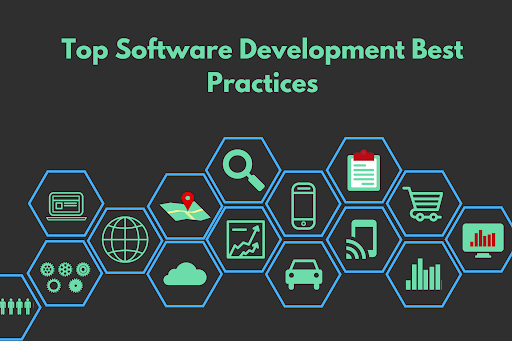As the tech landscape evolves, Agra has emerged as a notable player in the software development sector, thanks to its growing pool of talented professionals and vibrant startup ecosystem. However, to remain competitive and deliver high-quality products, software development companies in Agra must adhere to best practices that enhance productivity, ensure project success, and foster innovation. Here are some key best practices for software development in Agra.

Table of Contents
Toggle1. Embrace Agile Methodologies
Agile methodologies, such as Scrum or Kanban, enable teams to work collaboratively, adapt to changes, and deliver value incrementally. By breaking down projects into smaller, manageable units, teams can respond to customer feedback quickly, ensuring that the final product meets user expectations. Agile also promotes continuous improvement, which is vital in a rapidly changing tech environment.
2. Focus on Quality Assurance
Quality assurance (QA) should be an integral part of the software development lifecycle. Implementing automated testing tools can help identify bugs early, reducing the cost and time associated with fixing them later. Regular code reviews and adherence to coding standards are essential for maintaining code quality and ensuring that the software is robust and scalable.
3. Invest in Continuous Learning
The tech industry is ever-evolving, with new languages, frameworks, and tools emerging regularly. Software developers in Agra should prioritize continuous learning through workshops, online courses, and tech meetups. This not only enhances individual skills but also contributes to the overall growth of the development team and the organization.
4. Foster Collaboration and Communication
Effective communication among team members is crucial for project success. Utilize collaboration tools such as Slack, Trello, or Jira to keep everyone on the same page and streamline workflows. Regular meetings, both formal and informal, can help maintain transparency, address challenges, and celebrate achievements.
5. Prioritize User-Centric Design
A user-centric approach ensures that software products meet the needs and expectations of end-users. Involve users in the design and development process through surveys, interviews, and usability testing. Gathering feedback during various stages of development helps create a product that not only functions well but also provides a great user experience.
6. Implement Version Control Systems
Using version control systems like Git is essential for managing code changes and facilitating collaboration among team members. Version control allows developers to track changes, revert to previous versions if necessary, and work on different features simultaneously without conflicts. This practice enhances productivity and ensures a more organized workflow.
7. Ensure Security Best Practices
With increasing cyber threats, incorporating security into the software development process is paramount. Implement secure coding practices, conduct regular security audits, and stay updated on the latest security vulnerabilities. Training developers on security best practices can help mitigate risks and protect user data.
8. Adopt DevOps Practices
DevOps bridges the gap between development and operations, promoting a culture of collaboration and shared responsibility. Implementing DevOps practices can streamline the software delivery process, increase deployment frequency, and improve recovery times in case of failures. This leads to faster innovation and better alignment with business goals.
9. Monitor and Analyze Performance
Once software is deployed, continuous monitoring and analysis are vital to ensure its performance meets expectations. Utilize tools like Google Analytics, New Relic, or Prometheus to track user behavior, application performance, and potential bottlenecks. This data can guide future enhancements and help in making informed decisions.
10. Build a Supportive Company Culture
A positive and supportive company culture can significantly impact employee satisfaction and productivity. Encourage open communication, recognize achievements, and promote work-life balance. Fostering an environment where employees feel valued and motivated can lead to higher retention rates and better overall performance.
Conclusion
The software development landscape in Agra is filled with potential and opportunities. By adopting these best practices, software companies can enhance their development processes, deliver high-quality products, and maintain a competitive edge in the market. Emphasizing agility, quality, collaboration, and continuous learning will not only benefit the organizations but also contribute to the overall growth of the tech ecosystem in Agra. As the city continues to evolve as a tech hub, implementing these best practices will be crucial for sustainable success.


No responses yet